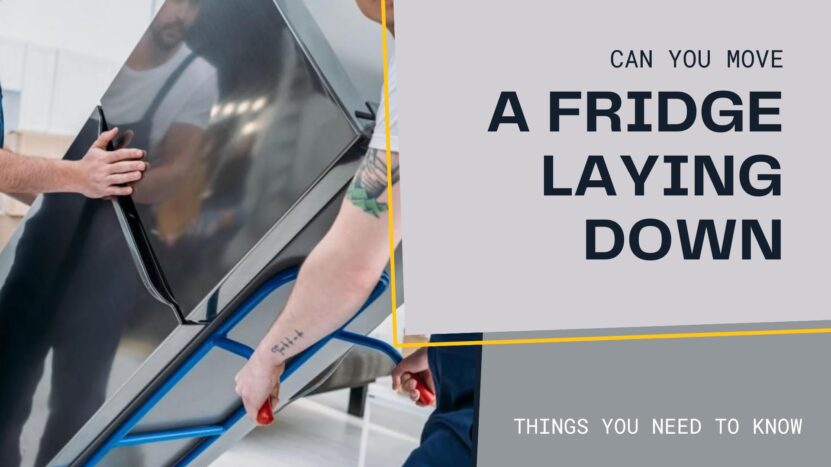Whether you’re moving to a new home, upgrading your kitchen appliances, or helping a friend relocate, you may find yourself faced with the challenge of transporting a refrigerator. It’s a big, heavy, and expensive piece of equipment, and you want to make sure it arrives at its destination in perfect working order.
One of the most common questions that come up during this process is whether you can move a fridge laying down. In this comprehensive guide, we’ll delve into this issue, explore the potential risks, and provide you with expert tips for safely moving your refrigerator.
The Short Answer: It’s Complicated
To put it simply, moving a fridge laying down is not the ideal method, but it can be done if necessary. However, doing so comes with certain risks and requires extra precautions to minimize potential damage. The best way to move a fridge is in an upright position, as it ensures the smoothest and safest transport. However, if you must lay it down, read on for expert tips to help you do it as safely as possible.
Why Moving a Refrigerator Laying Down Isn’t Ideal
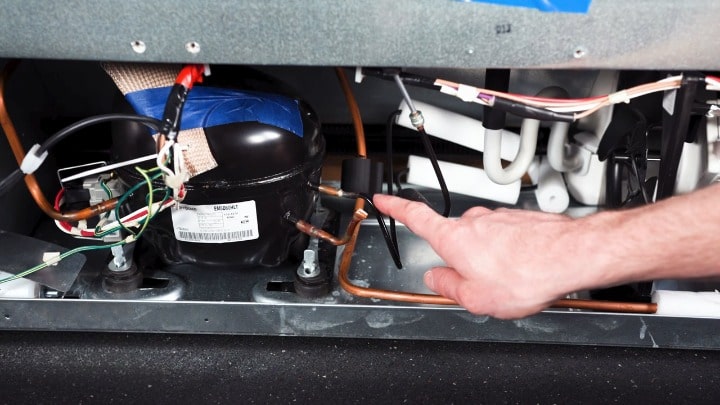
Compressor Oil Leakage
Refrigerators rely on a compressor to cool the interior, and this compressor contains oil to keep it lubricated. When a fridge is placed horizontally, there’s a risk that this oil may leak out of the compressor and seep into the refrigerant lines, which can cause issues when you power it back on. If the oil obstructs the refrigerant flow, it may not cool efficiently, leading to potential damage or reduced performance.
Refrigerant Pooling
Refrigerators use refrigerant (usually a gas) that flows through the system, absorbing heat and cooling the interior. When a fridge is placed horizontally, the refrigerant may pool in one part of the system, which can cause problems when it is turned back on. It may take longer for the refrigerant to redistribute evenly, affecting the refrigerator’s cooling performance.
Physical Damage
Laying it down puts extra stress on its internal components, such as the compressor, evaporator, and condenser. This additional pressure may cause components to shift or become damaged, leading to potential problems down the road. Moreover, laying a fridge down increases the likelihood of dents or scratches on its exterior.
Expert Tips for Moving a Fridge Laying Down
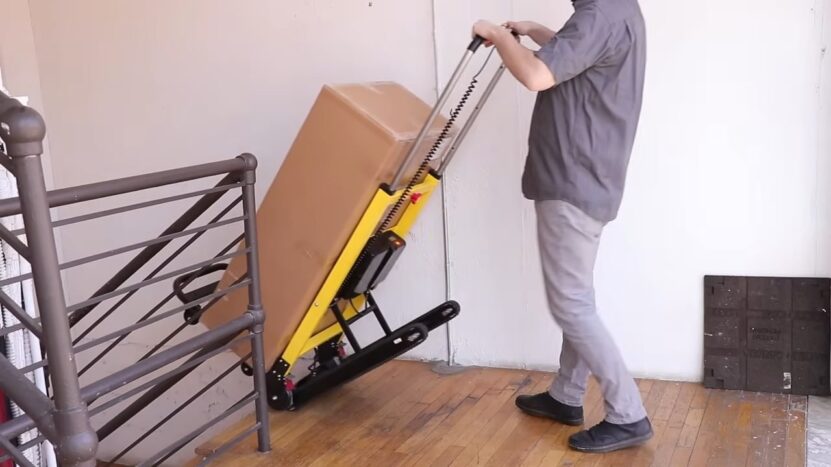
If you have no choice but to transport a fridge horizontally, follow these expert tips to minimize potential risks:
Choose the Right Side
If possible, lay the refrigerator down on its side, with the doors facing up. This position helps minimize the risk of compressor oil leakage and allows for better weight distribution. Avoid laying the fridge on its back, as this increases the likelihood of oil leaking into the refrigerant lines.
Secure the Doors
Ensure the refrigerator and freezer doors are securely closed and taped shut during transport. This prevents them from accidentally swinging open and causing damage. Moreover, remove any loose items inside the fridge and pack them separately.
Pad and Protect
Wrap the fridge in moving blankets, bubble wrap, or other padding materials to protect its exterior from dents and scratches. Secure the padding with packing tape or straps, ensuring that it stays in place throughout the move.
Use Proper Lifting Techniques
Enlist the help of friends or professional movers to carefully lift and position the fridge on its side. Use proper lifting techniques, bending at the knees and not the waist, to avoid injury. Additionally, consider using a dolly or furniture sliders to assist with moving the fridge.
Wait Before Plugging In
Once you’ve arrived at your destination and positioned the refrigerator upright, wait before plugging it in. Experts recommend waiting at least as long as it was laying down, with a minimum of two hours and up to 24 hours if possible.
This waiting period allows the compressor oil and refrigerant to settle back into their proper places, reducing the risk of damage or poor performance when the fridge is turned on. Patience is key here; turning it on too soon may cause long-term issues.
Level the Fridge
Before plugging in the refrigerator, make sure it’s level on the floor. An uneven surface can cause it to vibrate or produce noise, and it can also affect its overall performance. Most refrigerators come with adjustable feet to help you level them on uneven surfaces. Use a bubble level or a smartphone leveling app to ensure the fridge is properly balanced.
Monitor Performance
After allowing the fridge to settle and plugging it in, keep an eye on its performance for the first few days. Make sure it’s cooling efficiently, and listen for any unusual noises. If you notice any issues, consult your refrigerator’s user manual or contact the manufacturer for guidance.
Good Alternatives for Moving Your Fridge
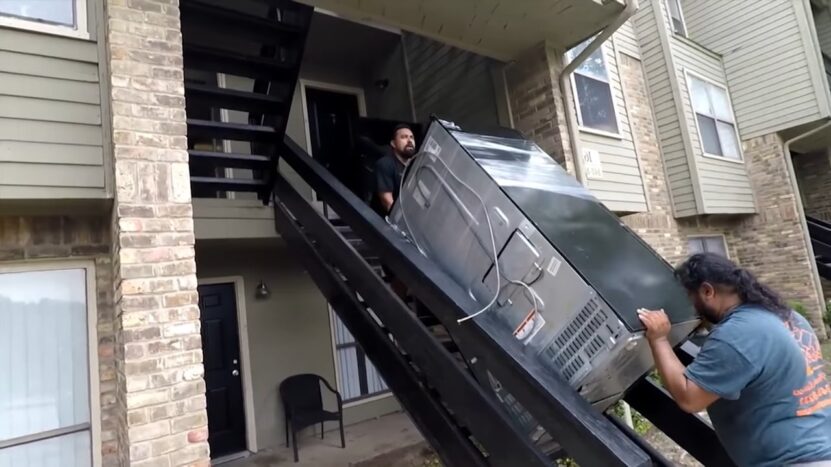
Professional Movers
Hiring professional movers is a convenient and reliable alternative for moving a fridge. With their expertise, experience, and the right equipment, they can ensure the safe and efficient transport of your refrigerator.
Professional movers are well-versed in handling bulky items and understand the best practices for moving them without causing damage. This option can save you time, effort, and potential mishaps while providing peace of mind that your appliance is in good hands.
Appliance Dolly
An appliance dolly, also known as a hand truck, is an excellent tool for moving a refrigerator safely and efficiently. Designed specifically for transporting heavy items, appliance dollies have sturdy frames, large wheels, and straps that secure the load.
They enable you to move a fridge in an upright position, which is the preferred method for transportation. By using an appliance dolly, you can minimize the risk of damage to both the fridge and your back, making the moving process smoother and safer.
Moving Straps
Another alternative for moving a fridge is using moving straps, also known as lifting straps or furniture straps. These straps are designed to help distribute the weight of heavy objects evenly, making them easier to lift and carry.
By using moving straps, you can keep it in an upright position during transportation, reducing the risks associated with laying it down. Moving straps require teamwork and proper coordination, so enlist the help of friends or family members to ensure a smooth and safe moving process.
Furniture Sliders
Furniture sliders are another useful tool for moving a fridge without laying it down. These small, low-friction discs can be placed under the feet of the refrigerator, allowing you to slide the appliance across the floor with minimal effort.
Furniture sliders are especially helpful when moving the refrigerator across hardwood, tile, or laminate flooring, as they reduce the risk of scratches and damage to the surface. They can be used in conjunction with other methods, such as moving straps or an appliance dolly, to make the process even more efficient and secure.
Disassembling the Fridge
In some cases, disassembling the refrigerator may be necessary to facilitate easier transportation. This process involves removing the doors, shelves, and other removable components to make it lighter and more maneuverable. Be sure to consult your refrigerator’s user manual for specific instructions on disassembly, as different models may have unique requirements.
Remember to label and store the removed parts carefully to avoid losing them or damaging them during transport. While disassembling a fridge may be more time-consuming, it can help make moving the appliance more manageable, especially in tight spaces or when navigating stairs.
Final Words
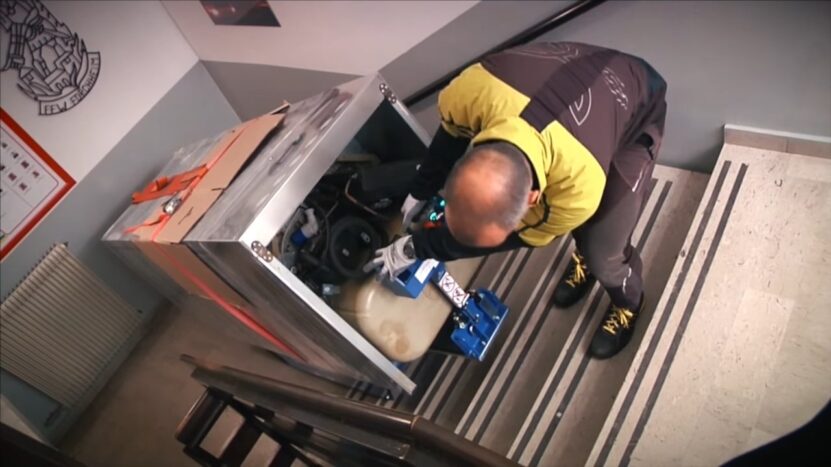
While moving a fridge laying down is not the ideal method, it can be done if necessary, provided you take the proper precautions. To minimize potential risks, always choose the right side to lay it down, secure the doors, pad and protect the exterior, use proper lifting techniques, wait before plugging in, level the fridge, and monitor its performance.
By following these tips, you’ll increase the chances of your refrigerator arriving at its destination in perfect working order, ready to keep your food and beverages cool for years to come.

